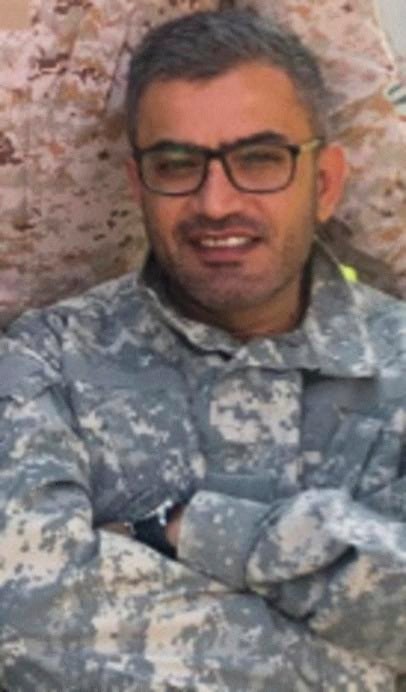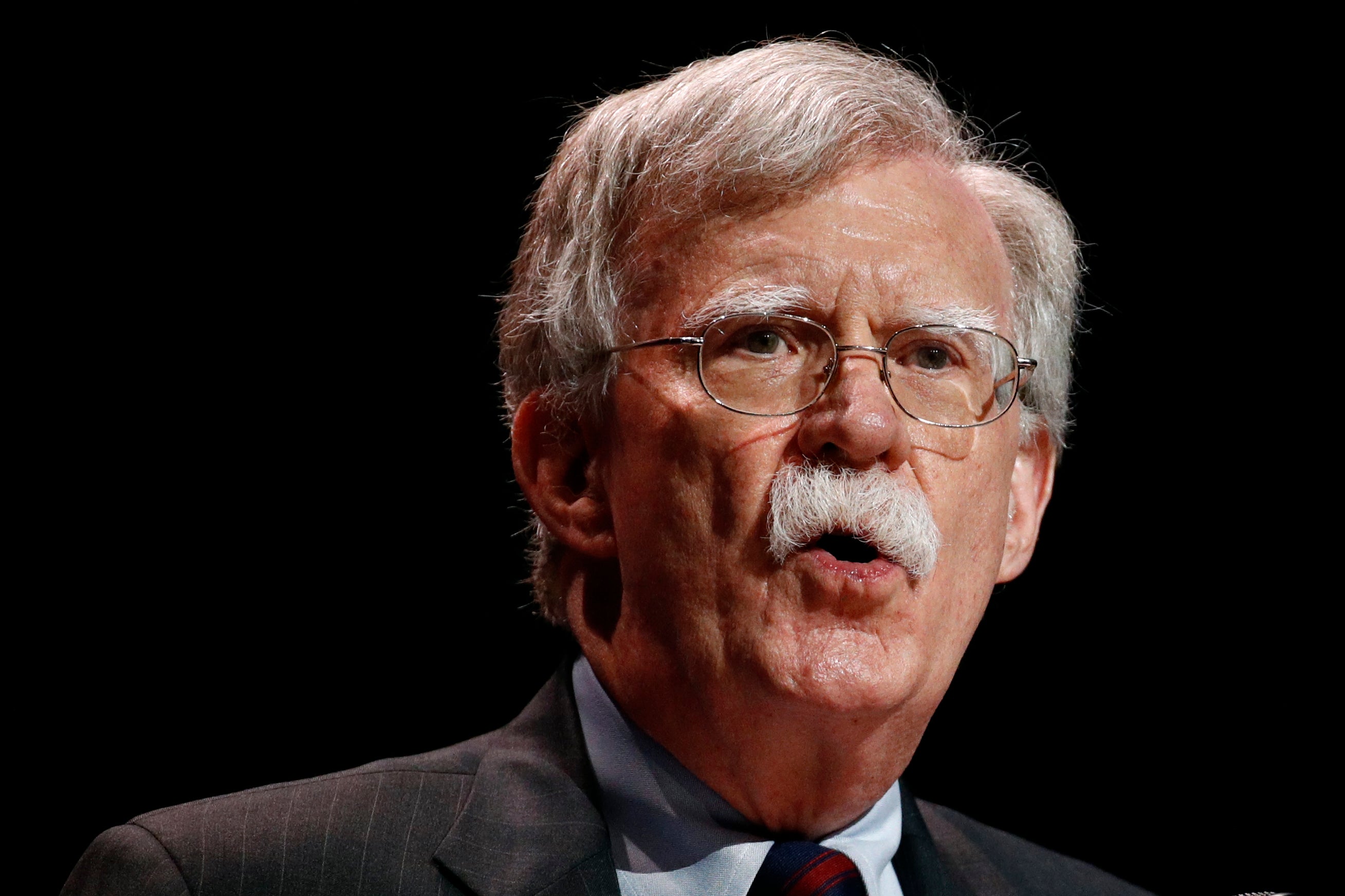Iranian Revolutionary Guard member charged with plotting to kill former Trump adviser John Bolton
‘While much cannot be said publicly right now, one point is indisputable: Iran’s rulers are liars, terrorists, and enemies of the United States,’ Bolton says
A member of Iran’s Islamic Revolutionary Guard Corps has been charged by the US Department of Justice (DOJ) with an alleged plan to assassinate Donald Trump’s former national security adviser John Bolton.
Shahram Poursafi, 45, stands accused of trying to pay $300,000 (£245,000) to an individual in the US to kill Mr Bolton, either in Washington DC or in Maryland, the justice department said.
Mr Poursafi, from Tehran, is still at large overseas, the DOJ noted. If he is located and subsequently convicted, he could spend a decade behind bars and face a fine of up to $250,000 for using “interstate commerce facilities in the commission of murder-for-hire”, according to the DOJ.
He could also face 15 years in prison and a $250,000 fine for “providing and attempting to provide material support to a transnational murder plot”.
Officials said the assassination plot would have been in retaliation for the killing of Revolutionary Guard Corps commander Qasem Soleimani by the US military in an airstrike in Baghdad in January 2020.
The corps is a branch of the Iranian military.
Mr Bolton was the national security adviser in the Trump administration for 17 months. He left the White House in 2019 after a dispute with the then president, Mr Trump, over the question of whether sanctions on Iran should be removed as a way to negotiate, The Washington Post reported.

Mr Bolton didn’t believe that the sanctions should be lifted. He was the person behind the administration’s efforts to impose economic sanctions and escalatory threats of retribution for Iran’s suspected support of terrorists.
The aim was to push the Iranian economy to its knees to such an extent that the country’s leaders would feel that they had to negotiate away their nuclear endeavours as well as their missile technology, according to the Post.
In a statement in regard to the plot, Mr Bolton said that “while much cannot be said publicly right now, one point is indisputable: Iran’s rulers are liars, terrorists, and enemies of the United States”.

“Their radical, anti-American objectives are unchanged; their commitments are worthless; and their global threat is growing,” he added.
Mr Bolton, 73, strongly supported the war in Iraq, which began in 2003. He served in the George W Bush administration in positions overseeing arms control, and later as the UN ambassador between 2005 and 2006.
After leaving the Bush administration, Mr Bolton joined conservative think tanks in Washington DC. He also worked at a private equity firm and appeared on Fox News as a contributor, the Post noted.
He came under fire last month when he said that the 6 January attack on the US Capitol wasn’t a coup, adding that he would know if it was because he had planned coups targeting other countries in the past.
“As somebody who has helped plan coups d’etat – not here but, you know, other places – it takes a lot of work, and that’s not what [President Trump] did,” Mr Bolton told CNN.
Court documents state that from October last year, Mr Poursafi, who is also known as Mehdi Rezayi according to the DOJ, tried to set up the murder of Mr Bolton.
“This is not the first time we have uncovered Iranian plots to exact revenge against individuals on US soil, and we will work tirelessly to expose and disrupt every one of these efforts,” assistant attorney general Matthew Olsen of the justice department’s National Security Division said in a statement.
Executive assistant director Larissa Knapp at the FBI National Security Branch said: “Iran has a history of plotting to assassinate individuals in the US it deems a threat, but the US government has a longer history of holding accountable those who threaten the safety of our citizens.”
Court documents reveal that on 22 October last year, Mr Poursafi asked a US resident whom he had met online to take photos of Mr Bolton. He claimed the photos were for a book he was working on.
The US resident told Mr Poursafi that they could introduce him to another person who could take the photos for between $5,000 and $10,000. Mr Poursafi first contacted the second individual on 9 November, asking them to hire someone to “eliminate” Mr Bolton, the DOJ said.
Mr Poursafi took screenshots of a map detailing the location of Mr Bolton’s office, with one screenshot showing that he was “10,162 km away”.
That’s “the approximate distance between Washington DC and Tehran, Iran,” the DOJ said.
The DOJ added that Mr Poursafi didn’t specify how the murder was to be conducted, but said that his “group” would need video confirmation of Mr Bolton’s death.
Mr Poursafi told the contact on 3 January this year that he was being pressured by “his people” to finish the assassination, and “expressed regret that the murder would not be conducted by the anniversary of Qasem Soleimani’s death,” the DOJ said in its press release.
The DOJ said that on 18 January, Mr Poursafi was able to provide the contact in the US with “specifics regarding the former national security adviser’s schedule that do not appear to have been publicly available”.
Mr Poursafi also told the contact that there was a second target after the completion of Mr Bolton’s assassination.
The DOJ said that Mr Poursafi had told the contact that the surveillance of the second target was complete, adding that the information had been collected from the US and not “via Google”.
This indicates that “someone working on behalf of the” Revolutionary Guard “had already conducted preoperational surveillance on the second target in the United States”, the DOJ said.
Mr Poursafi told the contact on 1 February that if the job hadn’t been completed within two weeks, it would be taken away from the contact.
He told the contact that “someone checked the area around the former national security adviser’s home, and he believed there was not a security presence, so the [contact] should be able to ‘finish the job’”, according to the DOJ.
On 10 March, Mr Poursafi told the contact that there was another assassination mission in the US for them, but that they should keep Mr Bolton “in the back of your mind”.
The top US law enforcement agency said that on 28 April, “Poursafi agreed to send the [contact] $100 in cryptocurrency to a virtual wallet” they had “created earlier that day, to prove payment could be made. Later that day, the cryptocurrency wallet received two payments totaling $100.”




